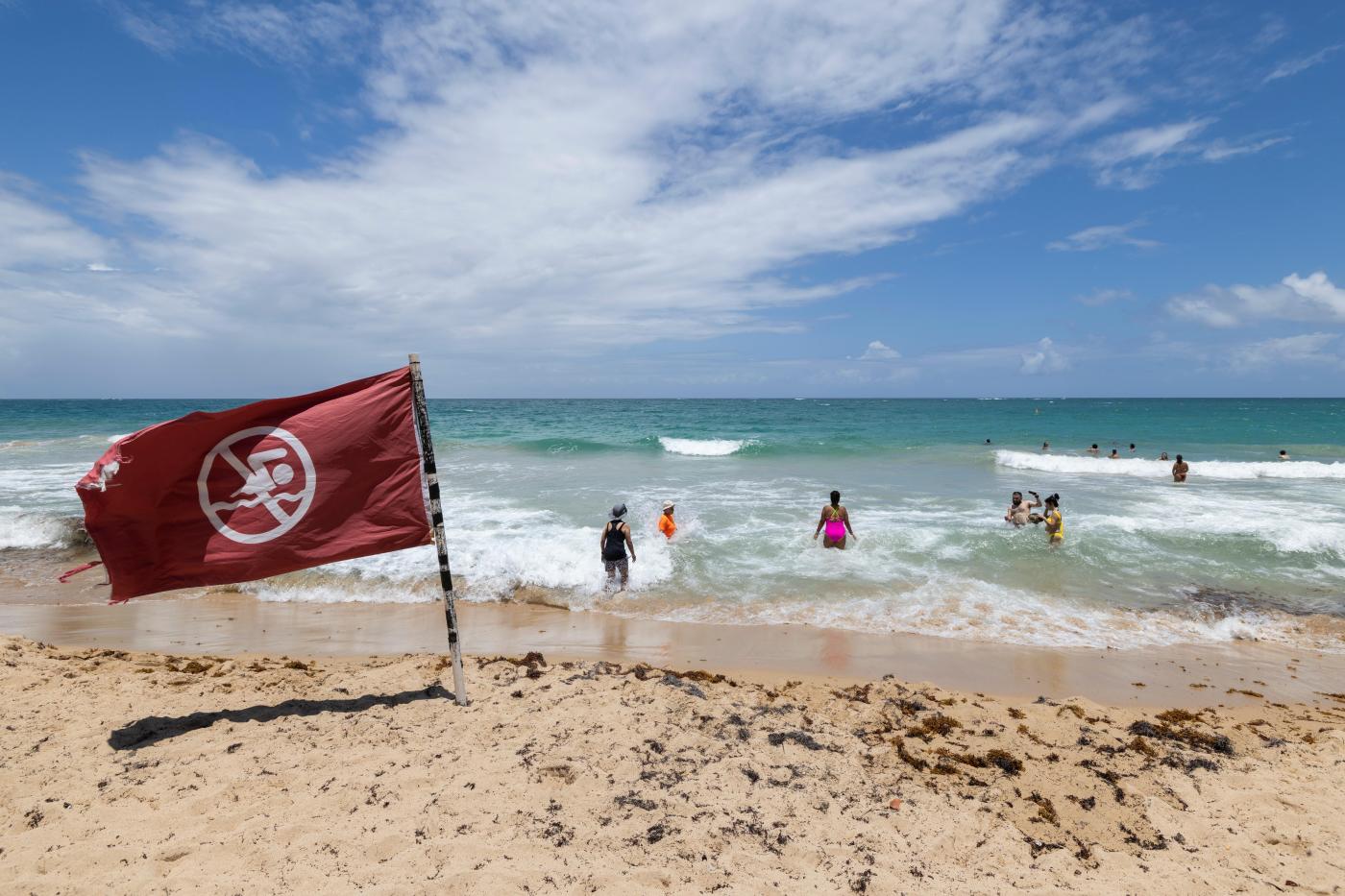Later this month, the Pac-12 will reveal the state of its finances prior to implosion with the release of federal tax filings for the 2024 fiscal year. But initial clarity has emerged, courtesy of the revenue-and-expense reports submitted by the schools to the NCAA.
The picture has a deep red hue and the unmistakable outline of campus subsidies written in indelible ink.
Athletic departments at the 10 public universities reported a combined $110 million shortfall, with $1.34 billion in revenue against $1.45 billion in expenses. Washington led all schools in both revenue ($190.9 million) and expenses ($200.1 million), while Washington State booked the lowest totals in both categories ($89.5 million and $89.1 million, respectively).
(Figures for the two private universities, Stanford and USC, were not reported.)
But in that fraught final year — with 10 schools preparing to join other leagues and Washington State and Oregon State fighting for survival — all but one athletic department relied heavily on school support.
That support typically takes two forms: 1) direct transfers from central campus; and 2) student fees that are allocated to athletics. In each case, the support is booked as revenue in accordance with the NCAA’s financial reporting rules.
In all, the public schools provided athletic departments with $197.4 million in support as Arizona State, Cal and UCLA accounted for more than half the total. (Details below.)
Oregon is the only school that did not book any student fees or direct transfers as revenue, and the Ducks managed to report an operating surplus of $1.9 million.
When the campus support is removed from the revenue total to create a more accurate picture of each department’s organic operations, that $110 million shortfall morphs into a $307.4 million crater — the largest combined shortfall for the 10 public schools (excluding campus support) since the Hotline began tracking Pac-12 finances in the early 2010s.
The reasons vary. But clearly, the demise of the conference played a significant role on several fronts:
— The 10 departing schools had $65 million withheld from the conference based on the terms of the negotiated settlement with WSU and OSU.
— Conference distributions were also lower as a result of the Comcast overpayment fiasco that was discovered in 2022. To recoup what it was owed, the company withheld $72 million over the 2023 and 2024 fiscal years.
— Many of the former Pac-12 schools increased their budgets to either build the infrastructure needed for their new conference’s media platforms (e.g., the Big Ten Network) or to increase resources for their sports programs to meet competitive benchmarks in the Big Ten, Big 12 and ACC.
The subsidization of athletic departments by central campus is not universally condemned within the college sports space. The process is considered an investment in brand-building, for few facets of campus receive as much media exposure nationwide as the sports teams.
That said, there are limits to the support offered to athletics, limits that vary by the campus.
Here’s a look at the key numbers and notable nuggets for each Pac-12 legacy school in the 2023-24 fiscal year, based on information disclosed in the NCAA financial reports:
— Arizona booked $134.5 million in revenue against $154.9 million in expenses for a shortfall of $20.4 million. The revenue total includes $13.9 million in student fees and direct campus transfers. (That figure tracks with the prior year’s amount.) Remove the campus support, and Arizona’s operating shortfall climbs to $34.3 million — a significant amount, yes, but less than the FY2023 total ($43.5 million), which included a $31.6 million loan to athletics.
— Arizona State booked $144.1 million in revenue against $144.1 million in expenses. The revenue total includes $49.3 million in campus support, of which approximately 25 percent came from student fees and the rest from direct transfers. ASU restructured in FY2024, embedding the athletic department into the university. However, the bottom line is effectively unchanged from the prior year, when athletics showed a $43.7 million shortfall when campus support was removed from the calculation.
— Cal booked $119.6 million in revenue against $149.3 million in expenses for a shortfall of $29.7 million. The revenue total includes $34.9 million in campus support. In the three post-COVID fiscal years, the Bears have received $96.5 million in student fees and direct transfers from campus. The first of at least three $10 million “Calimony” payments by UCLA, as directed by the UC regents, will be reflected in Cal’s financial report for FY2025.
— Colorado booked $146.6 million in revenue against $138.3 million in expenses for a surplus of $8.3 million. The revenue total includes $28.8 million in campus support. Football ticket revenue for the 2023 season, the first under coach Deion Sanders, was $31.2 million, compared to $13 million during the prior year. Football revenue overall increased $14.6 million year-over-year despite a $3 million drop in conference-related revenue that CU allocated to the football program.
— Oregon booked $169.2 million in revenue against $167.3 million in expenses for a surplus of $1.9 million. In keeping with past practice in Eugene, no student fees or direct transfers from campus were used. The football program generated a $55.3 million profit, while men’s basketball was in the black by $2 million. The Ducks’ Olympic sports, including women’s basketball, combined for a $28 million shortfall. (Those numbers reflect the state of affairs for schools across the country and lend context to the role football and basketball play in supporting all other sports.)
— Oregon State booked $120.3 million in revenue against $112.9 million in expenses for a surplus of $7.4 million. The revenue total includes $11.2 million in campus support. The Beavers recorded $19 million in conference distributions unrelated to media rights or the postseason, reflecting a portion of the cash secured in the settlement agreement with the 10 departed schools. (Washington State reported a similar amount.) OSU’s spending on football was essentially flat year-over-year.
Related Articles
Trump’s (planned) commission on college sports: Will it save the NCAA or just add to the chaos?
Pac-12, Mountain West agree to mediation over poaching penalty, exit fees
College football Top 25 rankings: Clemson is No. 1, then Penn State, Texas
CFB recap: Bill Belichick, the CBS fiasco and bread crumbs to realignment
Mailbag: Big Ten, SEC and the next FBS realignment wave
— UCLA booked $119 million in revenue against $170.9 million in expenses for a shortfall of $51.9 million. The revenue total includes $31.6 million in campus support as the university, for the first time, provided direct cash transfers to athletics. Remove campus help, and the Bruins’ shortfall soars to $83.5 million, an unprecedented figure for Pac-12 athletic departments in non-COVID years. In advance of its inaugural season in the Big Ten, UCLA’s expenses jumped by $29 million. The school offered the following statement upon release of its financial data: “UCLA is proud of our student-athletes, and our investment recognizes the connection our programs create in bringing together the global Bruin family.”
— Utah booked $109.8 million in revenue against $126.8 million in expenses for a shortfall of $17 million. The revenue includes $11.1 million in campus support. The Utes recorded a negative number for conference distributions unrelated to media rights or the football postseason (-$6.9 million) to reflect the money withheld by the conference as part of the negotiated settlement. They included an addendum to the financial report, as well: “Most of the deficit can be traced to the breakup of the Pac-12 Conference and significantly reduced distributions due to: the negotiated exit agreement; legal fees; overpayment of prior year television distributions” (i.e., Comcast).
— Washington booked $190.9 million in revenue against $200.1 million in expenses for a shortfall of $9.2 million. The revenue total includes $10 million in campus support. The run to the College Football Playoff in the fall of 2023 resulted in ticket revenue of $31 million, a year-over-year increase of $7 million. The Huskies also reported an $18 million uptick in “other operating revenue” that the university said could be traced to coaching contract buyouts paid to UW by other schools. (Hello, Alabama.)
— Washington State booked $89.5 million in revenue against $89.1 million in expenses for a surplus of $400,000. The revenue total includes $6.6 million in campus support. The Cougars were the only Pac-12 legacy school to spend less in FY2024 than the previous year, with the football program’s operating budget dropping 20 percent, from $25.3 million to $20.3 million. Of note: The Cougars spent $6 million less on football than Oregon State did during the first year of the transition phase to the new Pac-12.
Details on the conference distributions from FY2024, and relevant comparisons to schools in the ACC, Big 12, Big Ten and SEC, will be available later this month when the Pac-12 discloses its financial data.
*** Send suggestions, comments and tips (confidentiality guaranteed) to [email protected] or call 408-920-5716
*** Follow me on the social media platform X: @WilnerHotline





